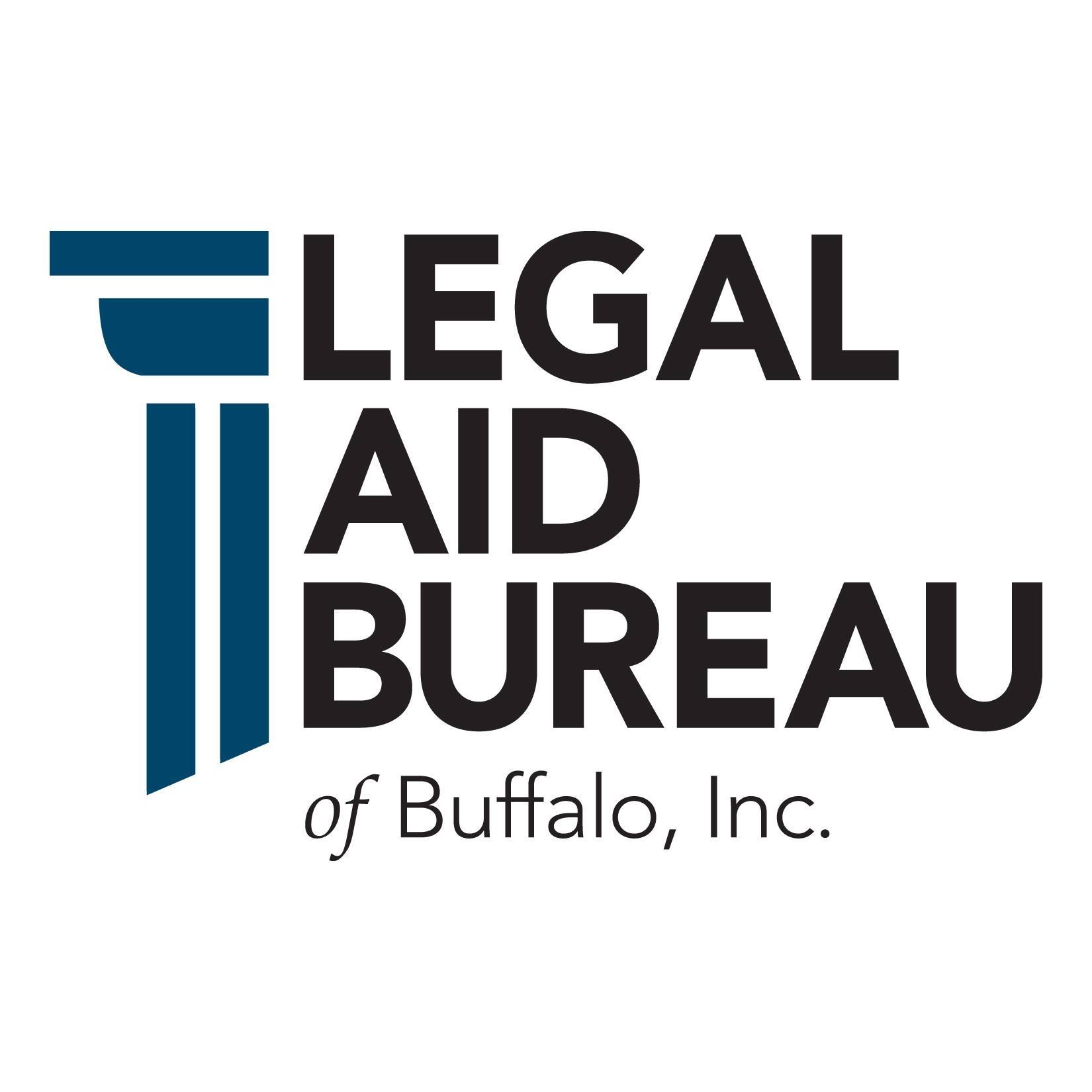Bail FAQs
Please continue to watch this space as we continue to add more information.

A Comprehensive Guide to Bail for Erie County & Buffalo City Courts
What is Bail?
Bail is an amount of money, assets like property, or another guarantee, that a client gives to the court to be released while their case is pending. The purpose of bail is to ensure the client returns to court for all scheduled court dates until the case is closed.
Who Can Post Bail?
It depends on the forms of bail set by the Judge, which are listed below. Typically, the client, any adult over 18 years old, or a bondsman can post bail.
Should I Post Bail?
There are several factors to consider in posting bail:
- What did the defense attorney recommend? You can speak with the client’s attorney after court and ask for their opinion on posting bail.
- Ask “does the client have a detainer?” before posting bail. A detainer is a hold on the client. It can be from parole, probation, or another pending case. If there is a detainer, the client will not be released even if bail is paid. Even worse, the client will not receive jail time credit on the case(s) for which the bail was paid. You should ask the clerk about detainers before posting bail.
- Will the client return to court? If you post bail and the client does not return to court for all scheduled court dates until the case is closed, you may, if the Judge orders the bail forfeited, lose the money or other assets you posted for bail.
How Can I Find Out How Much Bail I Need To Post?
- You can find out by going in person to court(s) the client has pending cases in.
- For Buffalo City Court go to Criminal Records on the first floor.
- For Erie County Court go to the Chief Clerk’s Office on the ground floor.
- You can also find out by calling the court(s) the client has pending cases in.
- For Buffalo City Court you can call (716) 853-9300. Select option 5 for “Buffalo City Court.” Then, select option 3 for “Criminal Matters.” Finally, select option 1 for “Criminal Records.”
- For Erie County Court you can call (716) 853-9300. Select option 2 for “Erie Supreme and County Courts.” Then, option 2 for “Criminal Matters” to be connected to the Chief Clerk’s Office.
- You can also call the Erie County Sheriff’s automated system 24 hours a day at (716) 858-7636 to find out. First, select your language. Then, select option 1 for “information about facility and inmates.” Next, select option 1 for “information about criminal charges, court dates, bond amounts.” Finally, enter the “inmate id” or you can press 1 to search by name.
- You can also contact the client’s attorney.
What are the Forms of Bail?
| Form of Bail | Who Can Post? | Where Do You Go? | What Should You Bring? | How Does It Work? | Is It Refundable? |
Cash Bail “A” |
Anyone over 18 years old, including the client (from commissary) |
The Courthouse,orthe Jail |
Identification, a paystub, Cash, Certified check, Money order |
The full amount of cash bail must be paid for the client to be released from custody. |
Yes, you will you get back 100% if the case is dismissed, and 97% if there is a guilty plea or conviction.Keep your bail receipt. |
Insurance Company Bail Bond“B” |
Bondsman |
Curbside at the Courthouse, Yellow Pages, or Online |
Paystub, Premium fee (usually 10% of the bail amount) and any additional required collateral |
A bondsman contracts to post bond for the client’s release in exchange for a premium fee and cash or property as collateral. The fee is typically 10%. |
A bondsman will not issue a refund for the 10% premium fee but will return any additional collateral held. |
Secured Surety Bond“C” |
Anyone over 18 years old, including the Client |
The Courthouse |
Identification, Personal property, or Deed for real property |
Supply the court with personal property (a car title, jewelry, stocks) equal to or greater than the bond amount, or real property (the deed to a home) worth at least twice the amount |
Yes. Keep your bail receipt. |
Secured Appearance Bond“D” |
Only the Client |
The Courthouse |
Identification, Personal property, or Deed for real property |
Supply the court with personal property that is equal to or greater than the bond amount—OR real property worth at least twice the amount of the bond |
Yes.Keep your bail receipt. |
| Form of Bail | Who Can Post? | Where Do You Go? | What Should You Bring? | How Does It Work? | Is It Refundable? |
Partially Secured Surety Bond“E” |
Anyone over 18 years old, including the client |
The Courthouse |
Identification,a Paystub, Cash, Certified check, or Money order |
Deposit a 10% of the total bond in cash with the court. You enter a legal agreement with the court to pay the full bond amount if the Client does not come to all court dates. |
Yes, you will get the 100% of 10% deposit back if the case is dismissed, and 97% of the 10% if there is a guilty plea or conviction.Keep your bail receipt. |
Partially Secured Appearance Bond“F” |
Only the Client |
The Courthouse |
Identification, Cash, Certified check, or Money order |
Deposit a 10% of the total bond in cash with the court. The client enters a legal agreement with the court. By signing, the client agrees to pay the full bond amount if he/she does not come to all court dates. |
Yes, you will get the 100% of 10% deposit back if the case is dismissed, and 97% of the 10% if there is a guilty plea or conviction.Keep your bail receipt. |
Unsecured Surety Bond“G” |
Anyone over 18 years old, including the Client. |
The Courthouse |
Identification, and a Paystub |
You enter a legal agreement with the court. By signing, you agree to pay the full bond amount if the client does not come to all court dates. No cash payment or property is required. |
Does not apply |
Unsecured Appearance Bond“H” |
Only the Client |
The Courthouse |
Identification |
The client enters a legal agreement with the court. By signing, the Client agrees to pay the full bond amount if he/she does not come to all court dates. No cash payment or property is required. |
Does not apply |
| Form of Bail | Who Can Post? | Where Do You Go? | What Should You Bring? | How Does It Work? | Is It Refundable? |
Credit card“I” |
Anyone over 18 years old with a credit card, including the Client. |
The Courthouse |
Identification,a Paystub,and your Credit card |
Only available for bail up to $2500. The judge must specifically authorize credit card payment. |
Yes, you will you get back 100% if the case is dismissed, and 97% if there is a guilty plea or conviction.Keep your bail receipt. |
How Do I Post Bail?
There are several ways to post bail:
- At Court:
- Buffalo City Court, Cashier Window, 50 Delaware Ave, Buffalo, NY 14202. You can post cash bail Monday – Friday from 9:00 a.m.- 4:30 p.m.
- Erie County Court, Chief Clerk’s Office, 25 Delaware Ave, Buffalo, NY 14202. You can post cash bail Monday – Friday from 9:00 a.m.- 4:30 p.m.
- At the Jail:
- Erie County Holding Center, Cashier Window, 40 Delaware Ave, Buffalo, NY 14202. You can post cash bail 24 hours a day, 7 days a week.
- Erie County Correctional Facility, 11581 Walden Ave., Alden, NY 14004 You can post cash bail 24 hours a day, 7 days a week.
- Through a Bondsman: You can locate a bondsman curbside at Buffalo City Court, through the yellow pages, through a Google Search for “Buffalo NY Bondsman,” or online through the New York State Department of Financial Services website. (Search for Buffalo in the “City” search box at the top of the chart. When you find a listing click the black and white circular icon in the far left column to expand the contact information for that listing.)
- Online: This option is not currently available.
Is Bail Refundable?
It depends on the forms of bail set by the Judge. Generally, bail is refundable when something of monetary value has been deposited with the court and the client has gone to all the scheduled court dates. It is important to note that if the client is convicted, a small percentage of the money will not be returned. Also, a bondsman will not issue a refund for the 10% premium fee but will often return any additional collateral held. However, if the client does not return to court, and the Judge issues a bench warrant the bail money will not be given back, it is forfeited to the court. Please consult the chart above as to whether your specific form of bail is refundable.
When Can I Get My Bail Money Refunded?
- If the Judge reviews bail and reduces it, the person who posted the bail can request the difference be refunded.
- If the client is released on their own recognizance, the person who posted bail can request the bail be refunded.
- The client voluntarily returns to jail and the person who posted bail has verified, supporting documentation. The person who posted the bail can request the bail be refunded.
- The case is closed, meaning the charges have been dismissed or the client has been sentenced. The person who posted bail can request the bail be refunded.
What Can I Do If the Bail I Posted Was Forfeited?
When the client does not return to court and the Judge has ordered the forfeiture of bail money, it is hard to get the bail money back. With that said, the person who posted the bail can ask the Court to return the bail money. This can only be done by the person who posted the bail through a Bail Remission Motion. If the client eventually returned to court, the motion can be made within one year of the Court order that forfeited the bail. See the New York Court Help website further information, including a sample motion.
How Do I Request Bail Refund?
The person who posted the bail must go to the Courthouse where the case was held. You must provide proper identification, the original bail receipt. If the client voluntarily returned to jail, you must also provide the supporting documentation from the Sheriff’s Department. It is important to note that you will receive a check payment via mail, not cash in hand for money bail.
Can Bail Money Be Used To Pay Fines?
Yes, bail money can be used to pay fines. Only the person who posted the bail can ask that the bail money be applied to pay the client’s fine or fee. To do this, the person who posted the bail has to submit a notarized statement to the Court Clerk. You will need to complete this form.
